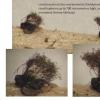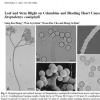
07-01-2026 22:22
 Danny Newman
Danny Newman
Tatraea sp. on indet. hardwood The Swag, Great Sm

10-01-2026 01:18
 Danny Newman
Danny Newman
cf. Neovaginatispora fuckelii on indet. shrub Pre

07-01-2026 10:24
 Danny Newman
Danny Newman
Pezicula sp. on indet. hardwood Appalachian Highl

09-01-2026 17:41
Arnold BüschlenHallo, F. dilatata wird von vielen Bryoparasiten

09-01-2026 10:08
 Blasco Rafael
Blasco Rafael
Hola, en el mismo habitat que la anteriorRetamaDia

08-01-2026 21:22
 Blasco Rafael
Blasco Rafael
Hola, He recogido esta muestra de Orbilia sobre Re

07-01-2026 17:29
 Marc Detollenaere
Marc Detollenaere
Dear Forum,On a barkless Populus I found some smal

10-11-2021 17:33
 Riet van Oosten
Riet van Oosten
Add-on topic http://www.ascofrance.com/forum/7059

07-01-2026 10:05
 Danny Newman
Danny Newman
cf. Chaetospermum on XylariaCosby Campground, Grea
 Dear Friends
Dear FriendsI am trying to identify the anamorphic fungus that grew on overwintered Chelidonium stems. It looks similar with the image of Streptobotrys streptothrix (see image below). As I understand, it is asexual sporulation of Sclerotiniaceae representative.
Are you familiar with this species?
Can I ask you to send me a description of Streptobotrys streptothrix from Persoonia (Hennebert, GL, 1973, Persoonia 7 (2): 192)? I do not have access to this article.
Thanks in advance for your help.
Alex

best wishes
Chris

Thank you for help!
My specimens really is Streptobotrys species, affinis Streptobotrys caulophylli. Because It grew on the overwintered Chelidonium majus stems I dont sure in the correctness of identification at species level. According morphology my specimens resemble Streptobotrys caulophylli, but substrate is not Caulophyllum. The teleomorph of Streptobotrys caulophylli is discomycete Streptotinia caulophylli.
If I'm not mistaken, this species has not previously been find in Europe.
Therefore, I send you more in detail information about it from the literature and ask you, if possible, try to find this on overwintered stems of Chelidonium majus during your fees.
Alex

Streptotinia cf. caulophylli M.E. Elliott in anamorph state Streptobotrys cf. caulophylli Hennebert
Sclerotia are black, characteristically flattened, loaf shaped or hemisphaerical, sometimes oblong, 500-1000 × 400-700 ?m, firmly attached to the substrate, with gelatinous matrix. Conidiophores erect, single or in dense groups, up to 700 ?m tall, with large loose conidial heads. Stipes brown, straight, cylindrical, septate, with a slightly swollen basal cell, 13-15 ?m in width near the base. At about half height stipe alternately branched. Side branches and branchlets are streptoform (i.e. twisted tightly), brown, 6.9-7.9 (-11.2) ?m in width. Terminal conidiogenous cells are lighter and densely branched, producing 2 to 6 simultaneous conidial buds on short pedicels, collapsing at maturity, leaving the branchlets with terminal perpendicular stumps which do not proliferate. Conidia holoblastic, regularly globose, subhyaline to brown, minutely echinulate, (7.1-) 7.4-8.8 (-10) -15 ?m in diameter, bearing an inconspicuous frill at the basal septum.
Streptobotrys caulophylli was described from Berberidaceae representative Caulophyllum thalictroides (L.) Michx. (Elliott, 1962). Also it is known from Ranunculaceae representatives: Thalictrum polygamum Muhl. (Elliott, 1969), Lamptocapnos spectabilis (L.) Fukuhara and Aquilegia vulgaris L. (Hong et al., 2004).
One of the principal characteristics of Streptotinia is the Botrytis-like conidial state – Streptobotrys in which the conidiophores are streptoform. Whetzel (1945) collected Botrytis conidiophores with streptoform braches from numerous hosts, including Papaveraceae representatives Glaucum flavum Crantz and Dicranostigma franchettianum Fedde. Whetzel believed that his material included several undescribed species, and he even placed tentative specific names on some of the specimens. However, this work was not completed.
Elliott (1969) found morphologically indistinguishable from Streptobotrys caulophylli species on Sanguinaria canadensis L. (Papaveraceae). She carried out series of experiments with cultures of Streptobotrys isolated from Caulophyllum, Thalictrum and Sanguinaria. Apothecia were regularly produced in culture after mating isolates from both Caulophyllum and Thalictrum, but never were produced for isolates from Sanguinaria. As a result, she could not get a definite answer whether the samples from Sanguinaria really are Streptobotrys caulophylli or it is the undescribed double-species. In this regard, our finding from Chelidonium majus L. (Papaveraceae) is of particular interest.











